


Framed or unframed, desk size to sofa size, printed by us in Arizona and Alabama since 2007. Explore now.
Shorpy is funded by you. Patreon contributors get an ad-free experience.
Learn more.

- Baldwin 62303
- Baldwin VO-1000
- Cold
- No expense spared
- Tough Guys
- Lost in Toyland
- And without gloves
- If I were a blindfolded time traveler
- Smoke Consumer Also Cooks
- Oh that stove!
- Possibly still there?
- What?!?
- $100 Reward
- Freeze Frame
- Texas Flyer wanted
- Just a Year Too Soon
- WWII -- Replacing men with women at the railroad crossing.
- Yes, Icing
- You kids drive me nuts!
- NOT An Easy Job
- I wonder
- Just add window boxes
- Icing Platform?
- Indiana Harbor Belt abides
- Freezing haze
- Corrections (for those who care)
- C&NW at Nelson
- Fallen Flags
- A dangerous job made worse
- Water Stop
Print Emporium
Texas Flood: 1904
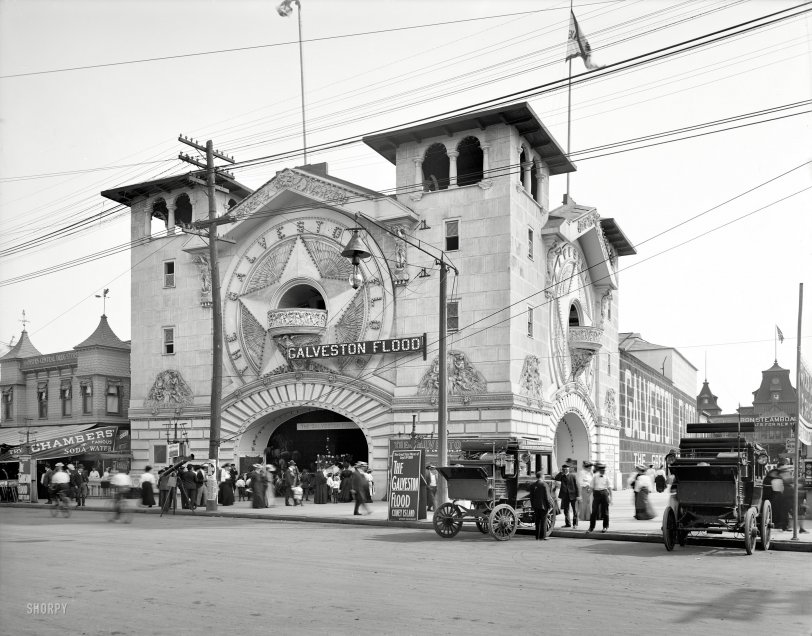
New York circa 1904. "Galveston Flood, Coney Island." The main attraction here was a cyclorama depicting the deadly hurricane that struck Texas in 1900. 8x10 inch dry plate glass negative, Detroit Publishing Company. View full size.
Electric Vehicle Company
Those are buses made by the Electric Vehicle Company of Hartford, Connecticut. The advertisement below is from the February 1, 1906 issue of "The Motor Way."
Here is an early version of one style of the company's cabs from the 1902 book "Self-Propelled Vehicles" by James E. Homans.
Starting in 1896 in Philadelphia as the Electric Carriage and Wagon Company, EVC was credited for establishing the mechanized cab service in New York. The firm moved to Elizabethport, New Jersey, in 1898 when it acquired Morris & Salom, makers of the Electrobat (1898 examples below).
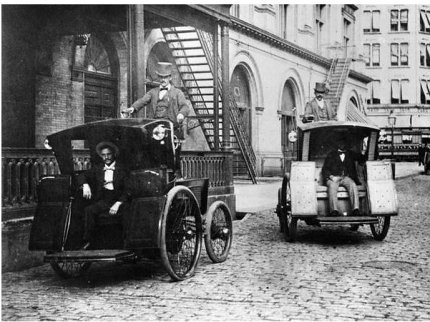
In 1899 Electric Vehicle moved to Hartford after acquiring the Columbia Automobile Company and its factory from Pope Manufacturing. Columbia made a full line of vehicles including hansom cabs as seen here. Unable to keep up with the demand for electric vehicles (some sources claim that in 1899 fully 90 percent of the taxis in New York City were electric), in 1900 it also acquired the Riker Electric Vehicle Co. of Elizabethport. Riker built hansom cabs, along with vans, hotel buses, trucks and and regular taxis (below, from "Self-Propelled Vehicles") that looked very similar to the early ones by Electric Vehicle.
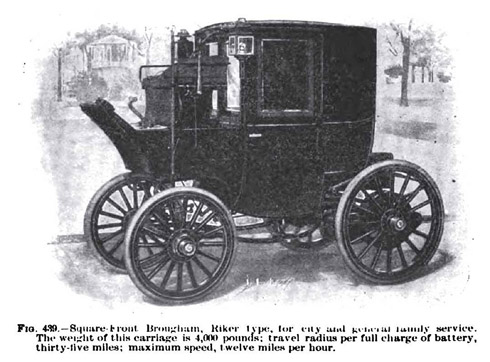
The company was controlled by the Widener-Elkins-Whitney syndicate that either bought up companies like Columbia and Riker, or allied themselves with many other electric power oriented companies, such as the Electric Storage Battery Company (Exide), or simply created new companies such as Electric Boat. It even managed to get control of the Selden Patent. The firm also created taxi companies in some 11 cities, including New York, where it would sell itself the electric taxis and the batteries that went in them. In fact, by 1899 it had the state rights to all of New York.
Its taxi business did not collapse when "three hundred of its cabs burned in a garage fire," as claimed in the 2007 book "Taxi!" by Graham Hodges. Its taxi subsidiary, The New York Electric Vehicle Transportation Company (which included the Fifth Avenue Coach Co.), had five such garages and many, many more cars (and still managed to save around 250 cars from the fire), and in fact continued in business until 1936. Nor were the cars as clumsy and ponderous as described by Hodges. Rather than wait for an eight hour recharge as claimed in the book, Electric Vehicle devised a battery pack that could be swapped out in 20 minutes, and the vehicle sent back into revenue service. It also invented a fast charger that could recharge a number of battery packs at the same time. Much to its dismay, one had just been installed in the garage that burned. As far as speed went, well, this is from the May 21, 1899 issue of The New York Times:
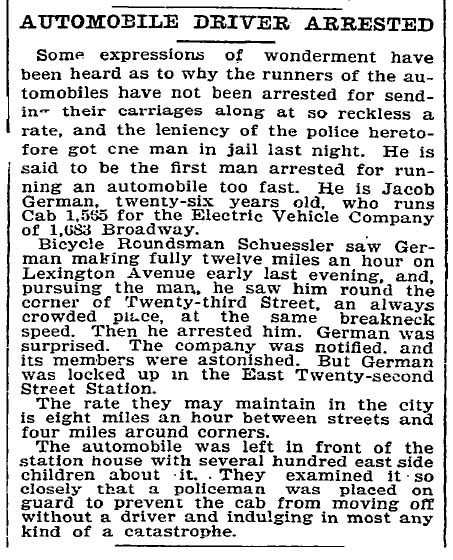
The vignette below is from an 1899 New York Electric Vehicle Transportation Co. stock certificate, and shows two types of cabs made by Electric Vehicle.
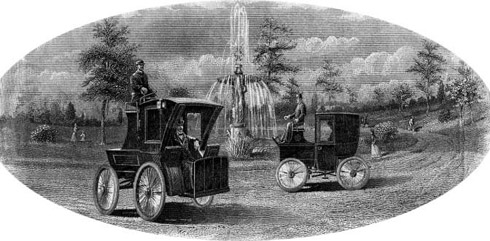
However, because the syndicate itself was falling apart, some of its holdings suffered. Electric Vehicle Company folded, although the manufacture of some of its products continued under the Columbia name along with Columbia's vehicles (gas and electric). Columbia was sold in 1910 to the United States Motor Company, and ceased production when that corporation collapsed in 1913. Over the years the other companies either folded or were sold off. Many still exist today, such as Exide battery and the submarine builder Electric Boat (now a division of General Dynamics).
Natural curiosity
My first reaction to the Galveston exhibit was the same as I had earlier at the Johnstown Flood pavilion in an earlier, different amusement park -- a kind of smug dismissal. Then I realized it was just an effective way of satisfying a very natural inclination to witness huge events. No Discovery Channel then but the need to know and "witness" was there.
Motorized stagecoaches
The two vehicles one with steeplechase park on its side seem to be possibly the ancestor of our modern cars, they appear to be converted carriages missing the team and traces that would have gone with them. Under the drivers seat is possible engine with louvers. If anyone knows what they are please post it.
[Those are, as Dennis M surmises, electric coaches. - Dave]
Virtual reality
Well, I suppose, if you regret missing out on the thrill of boarding the last train out of town, which was swept off the causeway and into the bay by the storm surge, or, being conscripted to load the dead onto a barge for burial at sea, this might be the next best thing.
The perfect show for all those people who like to rubberneck accidents on the freeway, making me late for work. Thanks a lot!
Motorized Stages
I find those motorized stages (don't know what else to call them) very interesting. Anyone have an idea of what they are? Looks like they might be electric.
Bright Light
This is an excellent view of an arc light, and shows the mechanism to lower the fixture to service the carbon rods. The wires for the electrical supply are intentionally slack to allow the light to be lowered by the rope that runs through pulleys to the base of the light standard.
"Cyclorama"
I was trying to determine what the attraction was -- a movie? Stuff they found washed up on shore? A play based on the flood? Then I did what many die-hard Shorpy fans do ... last. I read the caption and googled the keyword!
Could you direct me to the Galveston Flood?
More signs, Harry. I told you, we need more signs!
Correct Weight
I wonder how much they deducted from a woman's weight for all the clothes they wore at the time.
Come one, Come all
See how 8000+ of your fellow countrymen met their maker a few short years ago! And grab a soda on your way out.
Pardon Me -
"Is this the building where they show the Galveston Flood?" EIGHT signs!
Fancy Flood
I am amazed at the detailed and complex architecture of such a building, especially when you realize it was built as a temporary amusement showcase.
And by the way, what's written on the telescope stand?
[LOOK VENUS FREE. Astronomical educational something. - Dave]

























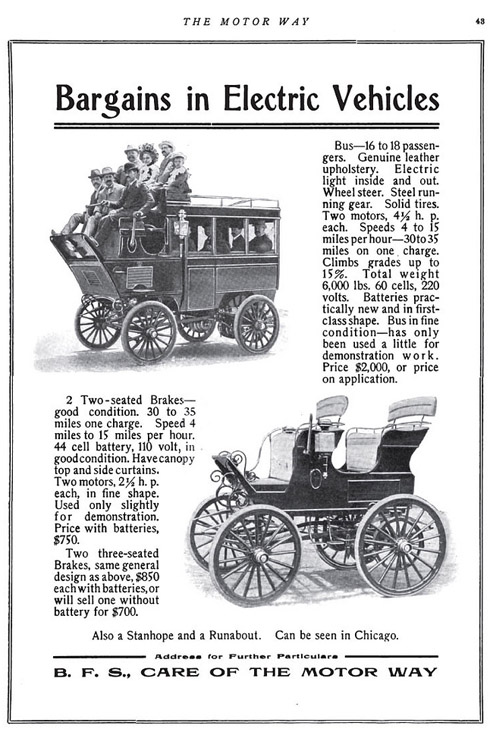
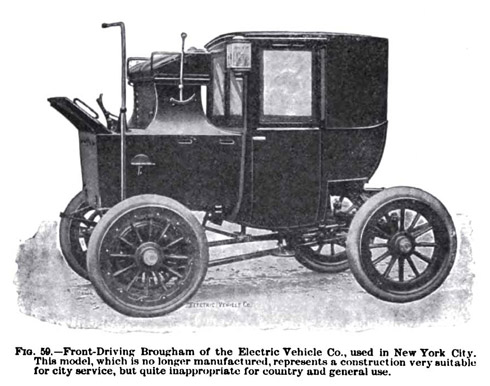
On Shorpy:
Today’s Top 5